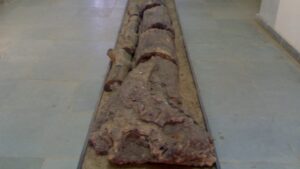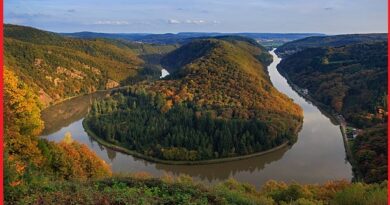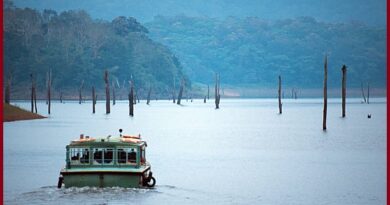Ghughwa National Fossils Park India that established the concept of ‘Pangaea’
Ghughwa National fossils Park
Ghughwa National fossils Park has situated 70km from the Dindori district of Madhya Pradesh in the village of Ghughwa. It is nestled in an area of 75 acres of land where attractive and rare fossils of leaves and trees can be explored. This National Park has plants in fossil form that existed in India anywhere between 40 million and 150 million years ago. Some Petrified trunks of trees have been identified as gymnosperms and Angiosperms Monocotyledons and palms are found to similar age as those found in Australia. It suggests that once Pangaea was a whole landmass and split into two halves Laurasia and Gondwana.
Some of the fossils found in the park include dinosaur bones, teeth, and eggs, as well as other ancient creatures such as turtles, crocodiles, and fish. Ghughwa National fossils Park is also home to a number of petrified trees that have been preserved in their original form. The park was discovered in 1983 by a group of geologists from the Geological Survey of India. Since then, it has become a popular destination for tourists and researchers alike.
Fossils Location
These fossils were scattered in a large areas of Dindori and Mandla district but was un-noticed by concerned authorities. These fossils were discovered by Dr. Dharmendra Prasad, the Statistical Officer of Mandla district and also the honorary secretary of the District Archaeology Union S.R. Ingle from Science College, Jabalpur. In year 1970, Dr. Dharmendra Prasad take necessary initiative for further study on them at Birbal Sahni Institute of Paleobotany, Lucknow. This discovery put this region into fossils map of the world and scientists, students and tourists, begun to visit this region with curiosity in mind to see the fossils.

Fossils diversity
The fossils in this park, is collected from nearby areas, around radius of 100 kms. The presence of fossils in this region makes way for creation of this fossil platform to conserve these valuable fossils and thus declaration for Ghughwa National fossils Park came in year 1983. The fossil record of Ghughua consists of mainly plants belonging to the Cretaceous to early Tertiary periods dating back to about 65 million years. So far 31 genera belonging to 18 families have been identified.
Their is a preponderance of palms and dicotyledons. Fossils of eucalyptus trees, found here are native to Australia which indicates of time when Great Gondwana Supercontinent was existing on earth. Other fossilized plants includes ancient Date Palm, Jamun, Banana, Rudraksh and Aonla. Some shell bearing animals have also been found which indicates that, in past, this region was much more humid and receives more rainfall.
Also read- The amazing Marine Gondwana Fossil Park and A Geo-Heritage site, Manendragarh
Places to see in Ghughwa National fossils Park
Ghughwa National fossils Park is a unique destination in India that offers visitors the opportunity to see a rare collection of fossilized tree trunks that are estimated to be around 150 million years old. Here are some of the things you can see and do at Ghughwa Fossil Park:
Explore the Fossil Beds- The park is home to several varieties of petrified wood, including agatized wood, jasperized wood, and silicified wood. Visitors can explore the park’s many trails and view the different types of fossils on display.
Visit the Interpretation Center- The park has an interpretation center that provides visitors with information about the history and geology of the park. Here, visitors can learn about the different types of fossils found in the park and how they were formed.
Bird Watching- Ghughwa National fossils Park is home to several species of birds, including kingfishers, peafowl, and bulbul. Bird watching is a popular activity in the park, and visitors can spot a variety of birds as they explore the park’s many trails.
Nature Walks- The park has several well-marked trails that visitors can follow to explore the park and learn about the fossils and the surrounding ecosystem. Visitors can take a leisurely stroll through the park and enjoy the natural beauty of the area.
Photography-The park is a great destination for photography enthusiasts who want to capture the beauty of the fossilized trees and the surrounding landscape. Visitors can take photographs of the fossils, the birds, and the natural scenery.

How to Reach Ghughwa National fossils Park
Nearest airport for visiting Ghughwa National fossils Park is in Jabalpur nearly 110kms. It is well connected with Delhi, Mumbai, Kolkata. From here one can hire Taxi to cover rest of the diatance to Ghughva fossils park. Nearest railway station for visiting Ghughua Fossil National Park is Umaria railway station at a distance of 70 kms in north-east direction. Visitors to the park can take guided tours to explore the park and learn more about the fossils and geology of the area. Ghughwa National fossils Park is open from 8:00 am to 6:00 pm every day, and admission fees are nominal. The best time to visit the park is between October and March when the weather is cool and pleasant. There are variuos tourist destinations next to fossil park such as Bandhavgarh, Amarkantak, Jabalpur, Kanha national park, Mandla, Achanakmar wildlife sanctuary.



